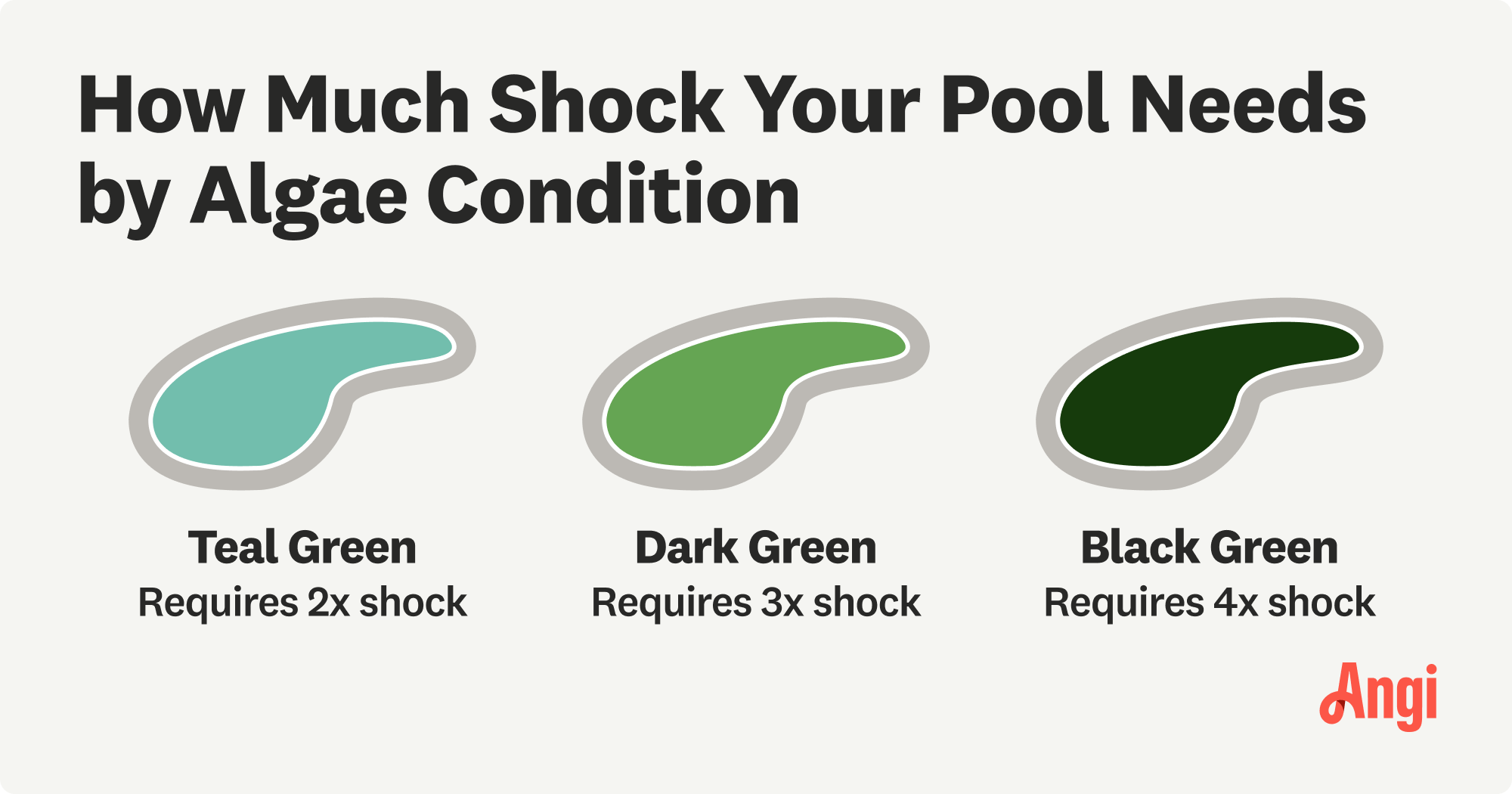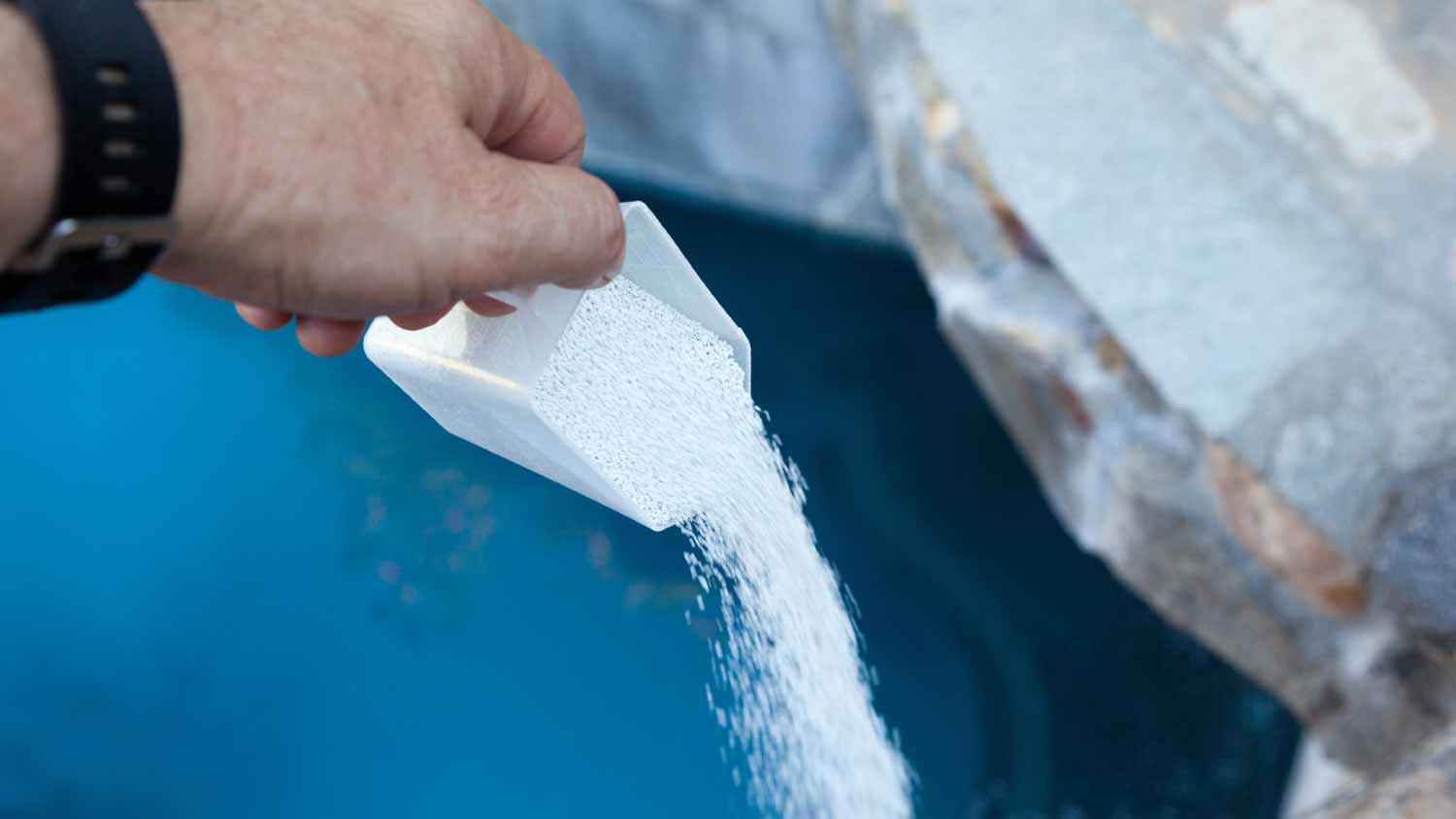
How much does it cost to fill a pool with water? It depends on the size of your pool and where you’re getting the water. This guide can help you budget.


The amount of shock you need for your pool depends on its volume and water condition.
You typically need one pound of shock per 10,000 gallons of water.
Add more if your pool is combating algae growth.
The average cost of pool shock is $5 to $15 per pound.
Shocking a pool eliminates chloramines, algae, bacteria, and other contaminants. It does this by elevating the available free chlorine level to 10 times or more the level of combined chlorine.
How much shock does my pool need? It's an excellent question to ask, as it eliminates guesswork and potentially saves both money and time. The answer depends on the size of your pool, the condition of the water, and the current levels of combined chlorine.
Guidelines suggest your pool needs one pound of pool shock for every 10,000 gallons. However, there are several factors to consider when determining precisely how much your pool needs at any given time.
There are several types of pool shock available, each with its own recommended amounts, depending on your goal. The exact amounts will be listed on the product packaging.
| Pool Size (gallons) | Pool shock for regular maintenance (lbs.) | Pool shock for light algae growth (lbs.) | Pool shock for heavy algae growth (lbs.) |
|---|---|---|---|
| 5,000 | 0.5 | 1 | 0.75–2 |
| 10,000 | 1 | 2 | 3–4 |
| 15,000 | 1.5 | 3 | 4.5–6 |
| 20,000 | 2 | 4 | 6–8 |

The first step to calculating how much shock your pool needs is determining the current water condition. Use test strips or a liquid testing kit (you can purchase either one from your local pool supply store or home improvement store) on your pool water and subtract the free chlorine amount from the total chlorine amount. Use the result, which is the combined chlorine level, to check the recommendations on the specific pool shock product you're using.
Next, convert that number by calculating it against the volume of water in your pool. That result is how much shock your pool needs.
Pounds of Shock = Pool Volume Gallons / 10,000

Measure the volume of a constant-depth rectangular pool by measuring one short side, one long side, and the depth. Multiply these values together. Multiply that value by 7.5 to convert cubic feet to gallons.
For pools with a shallow end, a deep end, and a continuously sloping bottom, multiply the length and width by the average depth and then by 7.5.
To measure the volume of a circular pool, measure the diameter, from one side to the other. Divide the diameter by two to get the radius. Square the radius and multiply it by 3.14. Multiply the result by the depth and by 7.5 for the total volume.
To determine the volume of irregular pools, determine the volume of each section separately. For example, if you have a sloping bottom in one part of the pool and constant depth in another, determine the volume of each space first. Add the volumes together for the total pool volume.
Continuous maintenance is necessary when you own a pool. Shocking your pool regularly is essential to keep the water quality in swimmable condition. While shocking your pool is straightforward, it's just one task of many on a pool maintenance checklist.
For that reason, many homeowners hire a local pool service to manage the week-to-week tasks to make sure their pool stays in optimal condition.
From average costs to expert advice, get all the answers you need to get your job done.

How much does it cost to fill a pool with water? It depends on the size of your pool and where you’re getting the water. This guide can help you budget.

Installing a pool heater ensures that your pool gets used as much as possible, but is the pool heater cost worth it? Let’s find out.

Need to know what pool resurfacing costs? Use this handy guide to get an accurate estimate for your project and see what factors can affect your total.

Make a pool closing checklist for your above ground pool this season to protect it from winter damage and ease springtime opening.

Swimming pools come in many sizes, but this pool size chart will simplify your choices and give you tips on how to choose the perfect size for your space.

You can build an above ground pool on uneven ground if you take the time to level it. This guide will show you how to level ground for a pool in a few easy steps.